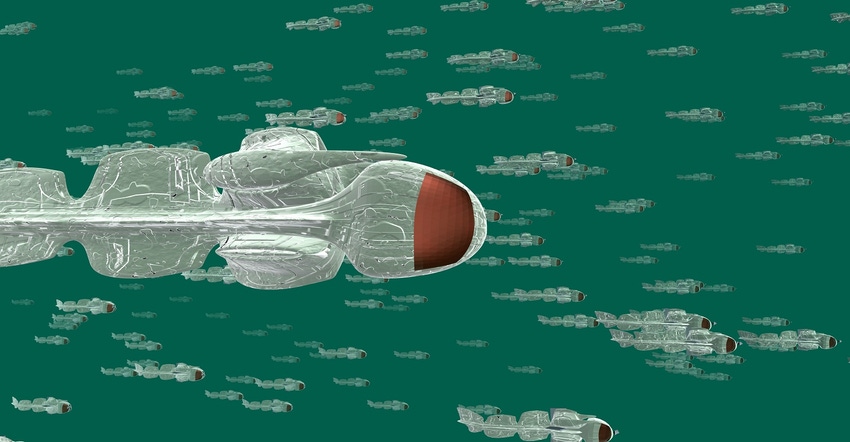Researchers have developed a robotic film, powered by sunlight, that can move freely on any body of water.
December 24, 2021

When oil spills occur, a very expensive and messy clean-up effort that involves difficult human labor is typically deployed. Now researchers in California have developed a helpful and low-cost robotic film that may one day aid greatly in this endeavor as a more sustainable solution.
Researchers at the University of California Riverside (UCR) developed the film, powered by light and fueled by water, that not only could be deployed on the ocean to clean up oil spills, but also remove contaminants from drinking water.
Dubbed “Neusbot”—for neustons, a category of animals that includes insects called water striders—the aim for developing the film, which is essentially a soft robot, was to create a self-powered and self-propelled machine, said URC chemist Zhiwei Li.
“Our motivation was to make soft robots sustainable and able to adapt on their own to changes in the environment,” he said in a press statement. “If sunlight is used for power, this machine is sustainable, and won’t require additional energy sources.”

Light-Based Control
Neusbot is not the first example of a film that can bend in response to light. However, previously scientists have not achieved a film with such range of motion--in the form of adjustable, mechanical oscillation on any body of water—that the robot can achieve.
This is what is key to controlling the robot and being able to deploy it where it is needed, researchers said. “There aren’t many methods to achieve this controllable movement using light,” Li explained.
If powered only by the sun, the robot would simply move forward, he explained. However, with an additional light source, someone can control where Neusbot swims and cleans.
Researchers used a tri-layer film that behaves like a steam engine to expand the robot’s movement. The middle layer of the film is porous, holding water as well as iron oxide and copper nanorods that convert light energy into heat, vaporizing the water. This is what powers Neusbot’s pulsed motion across the water’s surface, researchers.
The bottom layer of the film is hydrophobic, so even if a wave crashed over the film, it would float back to the surface, Li explained. Additionally, the nanomaterials can withstand high salt concentrations without damage to the robot.
Adding Clean-Up Capabilities
Currently, however, this three-layer design means that the robot does not yet have the component needed to clean up after oil spills or contaminations, a capability that is something researchers aim to add in the future with a fourth later.
“Normally, people send ships to the scene of an oil spill to clean by hand,” Li explained. “Neusbot could do this work like a robot vacuum, but on the water’s surface.”
Researchers published a paper on their work in the journal Science Robotics.
Future versions of the robot also will include mechanisms so researchers can control its oscillation mode more precisely and give it the capability for even more complex motion, Li said
“We want to demonstrate these robots can do many things that previous versions have not achieved,” he said.
Elizabeth Montalbano is a freelance writer who has written about technology and culture for more than 20 years. She has lived and worked as a professional journalist in Phoenix, San Francisco, and New York City. In her free time, she enjoys surfing, traveling, music, yoga, and cooking. She currently resides in a village on the southwest coast of Portugal.
About the Author(s)
You May Also Like



